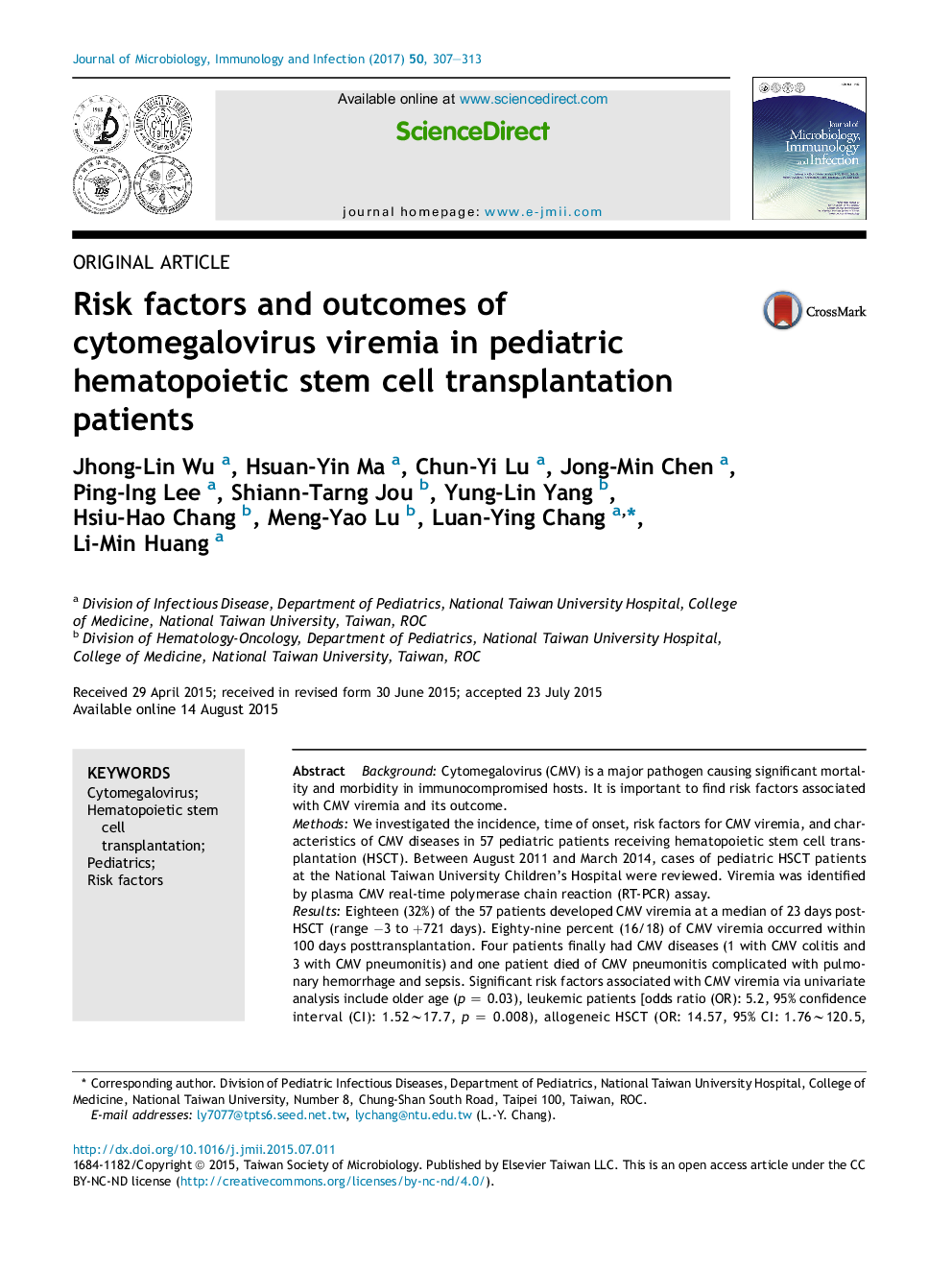| Article ID | Journal | Published Year | Pages | File Type |
|---|---|---|---|---|
| 5669020 | Journal of Microbiology, Immunology and Infection | 2017 | 7 Pages |
BackgroundCytomegalovirus (CMV) is a major pathogen causing significant mortality and morbidity in immunocompromised hosts. It is important to find risk factors associated with CMV viremia and its outcome.MethodsWe investigated the incidence, time of onset, risk factors for CMV viremia, and characteristics of CMV diseases in 57 pediatric patients receiving hematopoietic stem cell transplantation (HSCT). Between August 2011 and March 2014, cases of pediatric HSCT patients at the National Taiwan University Children's Hospital were reviewed. Viremia was identified by plasma CMV real-time polymerase chain reaction (RT-PCR) assay.ResultsEighteen (32%) of the 57 patients developed CMV viremia at a median of 23 days post-HSCT (range â3 to +721 days). Eighty-nine percent (16/18) of CMV viremia occurred within 100 days posttransplantation. Four patients finally had CMV diseases (1 with CMV colitis and 3 with CMV pneumonitis) and one patient died of CMV pneumonitis complicated with pulmonary hemorrhage and sepsis. Significant risk factors associated with CMV viremia via univariate analysis include older age (p = 0.03), leukemic patients [odds ratio (OR): 5.2, 95% confidence interval (CI): 1.52â¼17.7, p = 0.008), allogeneic HSCT (OR: 14.57, 95% CI: 1.76â¼120.5, p = 0.002), antithymoglobulin (ATG) use before transplantation (OR: 5.09, 95% CI: 1.52â¼16.9, p = 0.007), graft-versus-host disease (GvHD) (OR: 10.1, 95% CI: 2.7â¼38.7, p < 0.001), and gastrointestinal GvHD (OR: 10.9, 95% CI: 2.72â¼43.9, p = 0.001).ConclusionIn pediatric posttransplantation patients, CMV viremia mostly occurred within 100 days after transplantation. Risk factors associated with CMV viremia include older diagnostic age, leukemic patients, unrelated donor HSCT, pretransplant ATG use, GvHD, and gastrointestinal GvHD.
